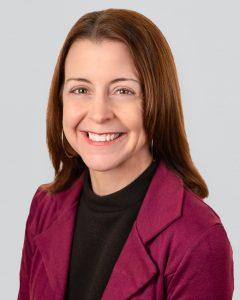FOCUS
Build bridges with student success in mind
By Suzanne Bouffard
Categories: Collaboration, System leadershipDecember 2024
As we head into 2025, building bridges is a timely theme for Learning Forward. Not only are we bridging the work we’ve been doing this past year with the future to ensure sustained access to high-quality professional learning, but we’re reflecting on the many bridges we all need to build to create a peaceful, productive, and positive world for young people.
In the context of historic political division, high rates of academic, social, and emotional stress among students, and uncertainties about the future, students need the adults in their communities to come together for the common goal of supporting their current and future success. If ensuring every student’s success were a simple task, we would have accomplished it by now. We haven’t, and it’s clear that no one person or institution can do this work alone. It will take schools, community institutions, higher education, families, policymakers, and others working together to put all the planks in place.
In this issue of The Learning Professional, we home in on building bridges between K-12 schools and other institutions, especially higher education, to create a career-long continuum of professional learning and educator excellence. Just as students benefit from partnerships among all the contexts where they live and learn, educators benefit when preservice programs and ongoing professional learning partner to reinforce key principles of teaching and learning.
As Frederick Brown describes in his professional learning wish list, educators should understand high-quality professional learning from their earliest days in the profession so they can seek it out, advocate for it, and embody its principles as they become leaders and role models. And leaders in training should come to see professional learning for themselves and others as a core part of their roles. That means university preparation programs and alternative certification programs should embrace and build a deep understanding of high-quality professional learning and the Standards for Professional Learning.
This issue’s Focus section includes several examples of fruitful professional learning partnerships that provide lessons for educators in all settings. Katie Dewey Hill and Janice Bradley explain how multiple stakeholders at the district, state, and university levels in Utah have worked together to build capacity for and quality of instructional coaching, pulling the levers of standards, credentialing, coursework, and on-the-job support.
Debra Russell and colleagues describe how a paid residency model for new teachers that leverages both universities and districts is leading to a stronger, more diverse, more prepared, and more stable teacher workforce. Leaders at the National Center for School-University Partnerships and some of their members write about how collaboration allows them to conduct cycles of inquiry and find solutions for their most pressing problems. And leaders from Tennessee’s State Collaborative on Reforming Education (SCORE) show how they are expanding their impact, bringing the lessons from their successful efforts helping districts improve reading instruction to preservice teacher education programs.
These stories and strategies resonate with us at Learning Forward because everything we do is grounded in a culture of collaborative inquiry. From our networks to our professional services in districts to our collaboration with authors, we are constantly building bridges with student success in mind. We will be highlighting the theme of bridges throughout 2025, including at our Annual Conference in Boston. If you have a story of bridging to tell, apply to present at our conference, submit an article for this journal, or reach out and share the lessons you’ve learned. We can get students from where they are today to where we want them to be tomorrow if we learn and lead together.
''Students need the adults in their communities to come together for the common goal of supporting their current and future success,'' writes Suzanne Bouffard. #TheLearningPro Share on X
Suzanne Bouffard is senior vice president of communications and publications at Learning Forward. She is the editor of The Learning Professional, Learning Forward’s flagship publication. She also contributes to the Learning Forward blog and webinars. With a background in child development, she has a passion for making research and best practices accessible to educators, policymakers, and families. She has written for many national publications including The New York Times and the Atlantic, and previously worked as a writer and researcher at the Harvard Graduate School of Education. She has a Ph.D. in developmental psychology from Duke University and a B.A. from Wesleyan University. She loves working with authors to help them develop their ideas and voices for publication.
Categories: Collaboration, System leadership
Recent Issues
LEARNING DESIGNS
February 2025
How we learn influences what we learn. This issue shares essential...
BUILDING BRIDGES
December 2024
Students benefit when educators bridge the continuum of professional...
CURRICULUM-BASED PROFESSIONAL LEARNING
October 2024
High-quality curriculum requires skilled educators to put it into...
LEARNING TO PIVOT
August 2024
Sometimes new information and situations call for major change. This issue...












